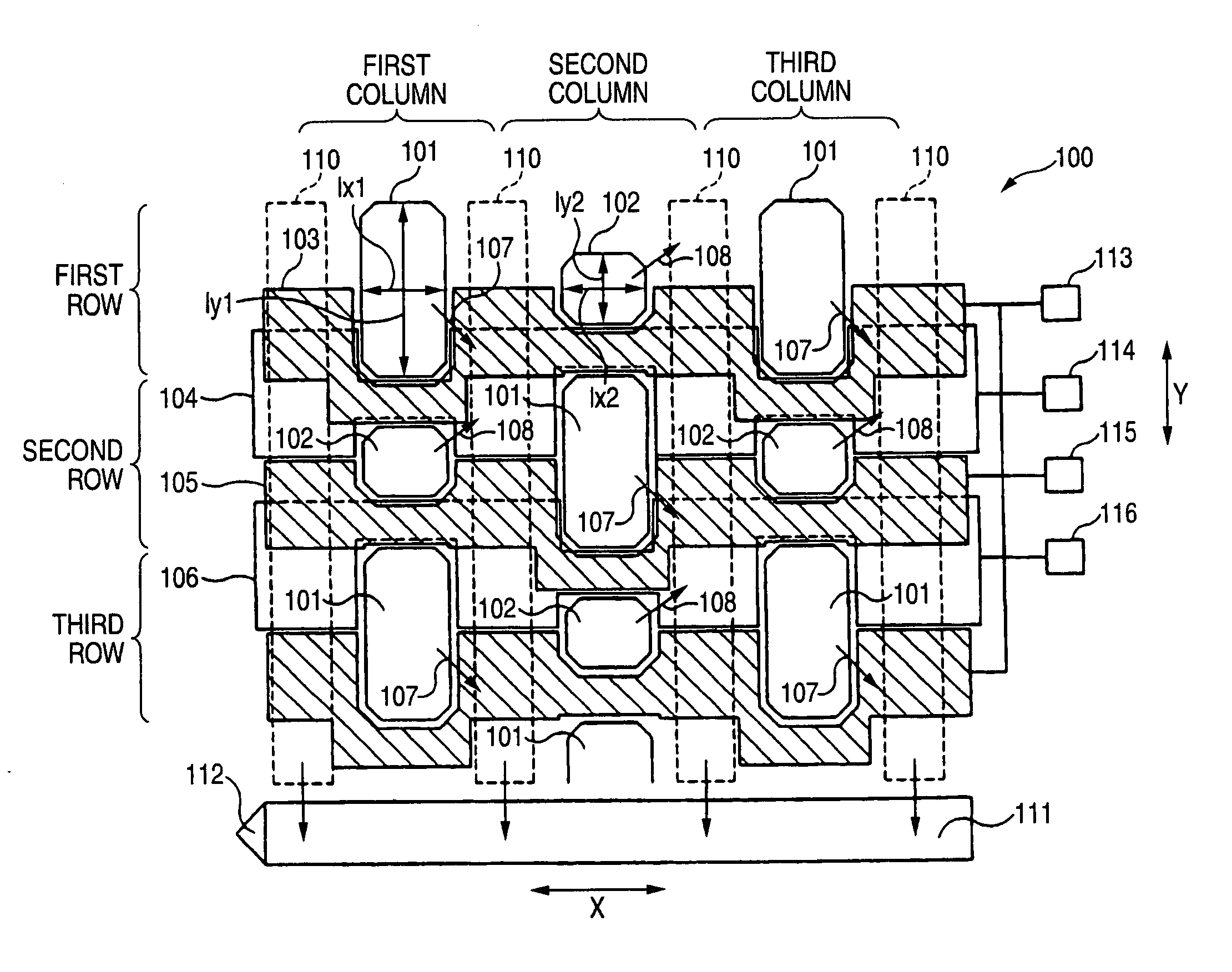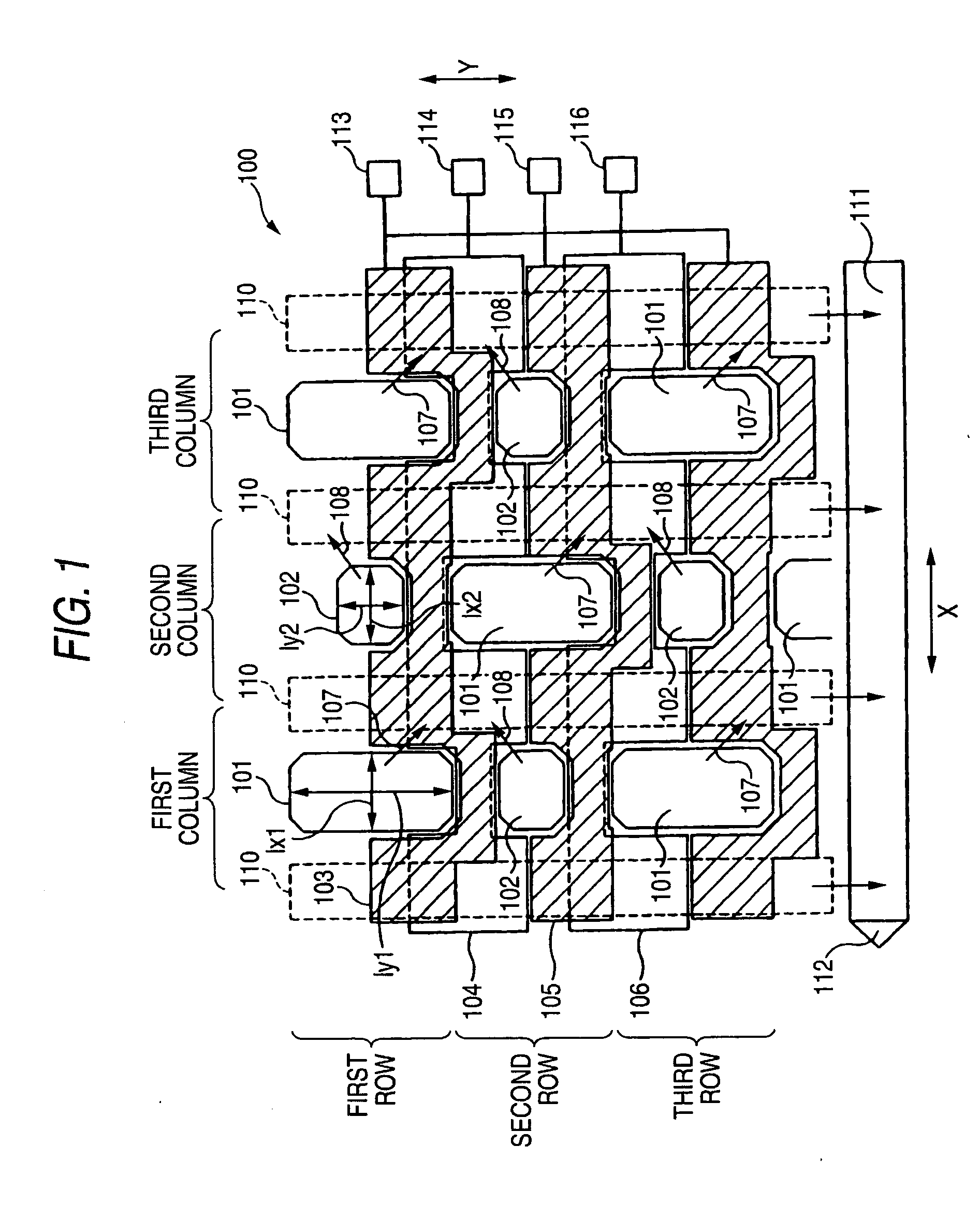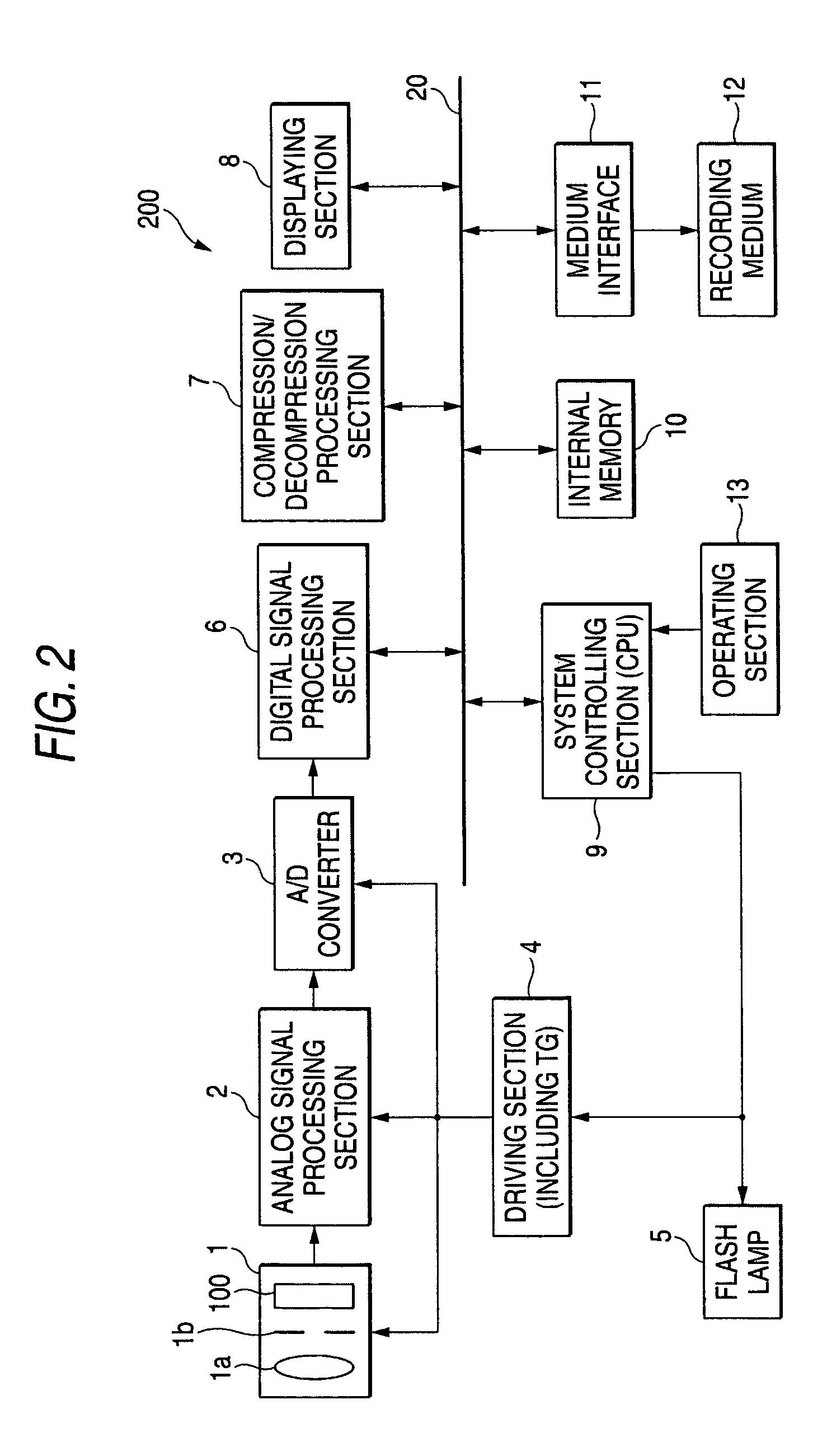Solid-state imaging device, and method of driving solid-state imaging device
a solid-state imaging and imaging device technology, applied in the direction of radiation controlled devices, instruments, optical radiation measurement, etc., can solve the problems of lowering the resolution in at least one longitudinal and lateral direction, and it is difficult in general to widen the dynamic range, so as to achieve the effect of expanding the dynamic range without lowering the resolution
- Summary
- Abstract
- Description
- Claims
- Application Information
AI Technical Summary
Benefits of technology
Problems solved by technology
Method used
Image
Examples
first embodiment
[0036]FIG. 1 is a view schematically showing the configuration of a solid-state imaging device 100 illustrating a first embodiment of the invention. FIG. 1 is a partial enlarged view of the solid-state imaging device 100.
[0037] The solid-state imaging device 100 includes: plural first photoelectric conversion elements 101 and second photoelectric conversion elements 102 (hereinafter, often referred to merely as photoelectric conversion elements) which are arranged in a square lattice on a surface of a semiconductor substrate in a row direction (the direction X in FIG. 1) and a column direction (the direction Y in FIG. 1) that is perpendicular to the row direction; vertical transfer portions 110 which are disposed to respectively correspond to plural photoelectric conversion element columns each configured by the photoelectric conversion elements that are arranged in the column direction, and which transfer charges from the photoelectric conversion elements in the column direction; ...
second embodiment
[0095]FIG. 13 is a view schematically showing the configuration of a solid-state imaging device illustrating a second embodiment of the invention. FIG. 13 is a partial enlarged view of the solid-state imaging device 300.
[0096] The solid-state imaging device 300 includes: plural first photoelectric conversion elements 301 and second photoelectric conversion elements 302 (hereinafter, often referred to merely as photoelectric conversion elements) which are arranged in a square lattice on a surface of a semiconductor substrate in a row direction (the direction X in FIG. 13) and a column direction (the direction Y in FIG. 13) that is perpendicular to the row direction; vertical transfer portions 310 which are disposed to respectively correspond to plural photoelectric conversion element columns each configured by the photoelectric conversion elements that are arranged in the column direction, and which transfer charges from the photoelectric conversion elements in the column direction;...
PUM
 Login to View More
Login to View More Abstract
Description
Claims
Application Information
 Login to View More
Login to View More - R&D
- Intellectual Property
- Life Sciences
- Materials
- Tech Scout
- Unparalleled Data Quality
- Higher Quality Content
- 60% Fewer Hallucinations
Browse by: Latest US Patents, China's latest patents, Technical Efficacy Thesaurus, Application Domain, Technology Topic, Popular Technical Reports.
© 2025 PatSnap. All rights reserved.Legal|Privacy policy|Modern Slavery Act Transparency Statement|Sitemap|About US| Contact US: help@patsnap.com



